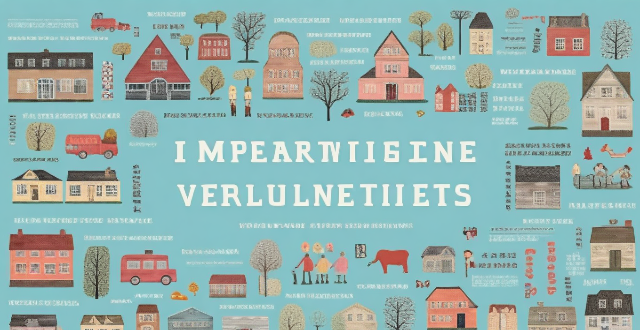The text discusses the importance of including vulnerable populations, such as the poor, elderly, children, and those with disabilities, in climate decision-making processes. It highlights the reasons for their inclusion, strategies to facilitate their participation, effective communication channels, policy recommendations, and success stories. The text emphasizes the need for accessibility, language support, child-friendly approaches, financial support, community workshops, door-to-door outreach, social media campaigns, and art and storytelling to reach out to these populations. It also suggests legal mandates, funding priorities, and monitoring and evaluation as policies to support inclusivity. Overall, the text argues that involving vulnerable populations in climate decision-making is crucial for equity, diversity of perspectives, and effective solutions.

Engaging Vulnerable Populations in Climate Decision-Making Processes
Introduction
Climate change affects everyone, but its impact is often disproportionately felt by vulnerable populations. These groups—including the poor, elderly, children, and those with disabilities—are frequently overlooked in decision-making processes. To protect their rights, it's crucial to involve them in discussions and actions related to climate change.
Importance of Inclusion
*Why Should We Include Them?*
- Equity: Everyone has the right to participate in decisions that affect their lives.
- Diversity of Perspectives: Vulnerable groups often have unique insights due to their experiences.
- Effective Solutions: Inclusive processes lead to more effective and sustainable solutions.
Strategies for Engagement
*How Can We Facilitate Their Participation?*
- Accessibility: Ensure that meetings and materials are accessible to people with disabilities.
- Language Support: Provide translation and interpretation services for non-native speakers.
- Child-Friendly Approaches: Adapt communication methods for children to ensure they understand and can participate.
- Financial Support: Offer subsidies or reimbursements for transportation and childcare to reduce financial barriers.
Communication Channels
*What Are Some Effective Ways to Reach Out?*
- Community Workshops: Host local events where these populations feel comfortable participating.
- Door-to-Door Outreach: Direct interaction can help bridge trust gaps and gather input.
- Social Media Campaigns: Use platforms popular among younger demographics for outreach and education.
- Art and Storytelling: Incorporate creative methods to convey complex information more accessibly.
Policy Recommendations
*What Policies Can Support This Inclusivity?*
- Legal Mandates: Legislation requiring inclusion in climate planning and policy development.
- Funding Priorities: Allocate specific budgets for outreach to vulnerable populations.
- Monitoring and Evaluation: Establish metrics to track the effectiveness of inclusion efforts.
Success Stories
*What Are Some Examples of Successful Inclusion?*
- Urban Green Spaces: Involving low-income residents in planning led to parks that met their needs.
- Disaster Preparedness: Including disabled individuals in emergency response planning improved evacuation procedures.
- Education Programs: School initiatives involving children raised awareness and fostered eco-friendly habits.
Conclusion
Including vulnerable populations in climate decision-making is not just a moral imperative but also a practical one. Their voices enrich the discussion and lead to more comprehensive strategies for tackling climate change. By employing the strategies outlined above, we can ensure that no voice is left behind in the fight against climate change.